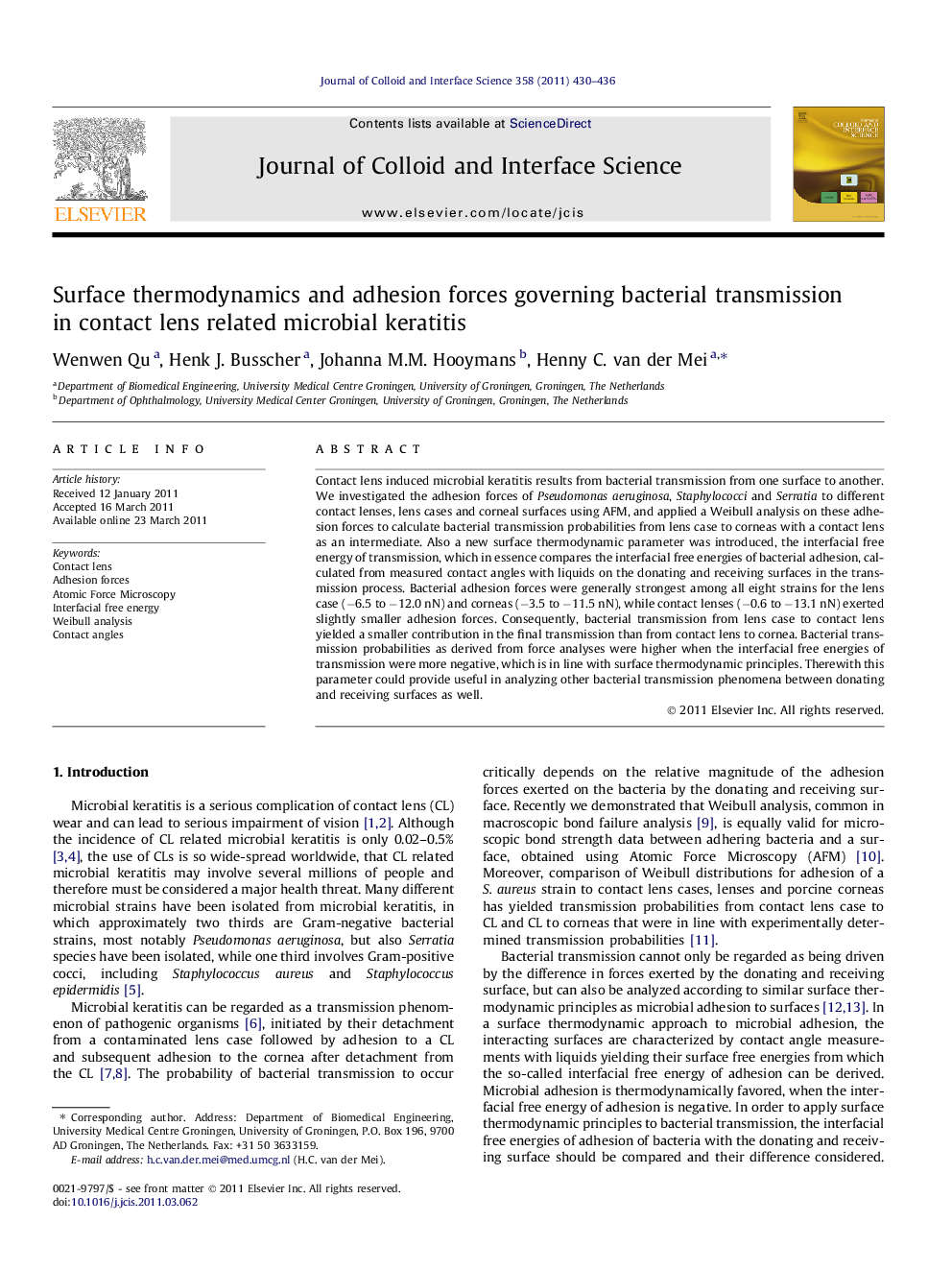| Article ID | Journal | Published Year | Pages | File Type |
|---|---|---|---|---|
| 608592 | Journal of Colloid and Interface Science | 2011 | 7 Pages |
Contact lens induced microbial keratitis results from bacterial transmission from one surface to another. We investigated the adhesion forces of Pseudomonas aeruginosa, Staphylococci and Serratia to different contact lenses, lens cases and corneal surfaces using AFM, and applied a Weibull analysis on these adhesion forces to calculate bacterial transmission probabilities from lens case to corneas with a contact lens as an intermediate. Also a new surface thermodynamic parameter was introduced, the interfacial free energy of transmission, which in essence compares the interfacial free energies of bacterial adhesion, calculated from measured contact angles with liquids on the donating and receiving surfaces in the transmission process. Bacterial adhesion forces were generally strongest among all eight strains for the lens case (−6.5 to −12.0 nN) and corneas (−3.5 to −11.5 nN), while contact lenses (−0.6 to −13.1 nN) exerted slightly smaller adhesion forces. Consequently, bacterial transmission from lens case to contact lens yielded a smaller contribution in the final transmission than from contact lens to cornea. Bacterial transmission probabilities as derived from force analyses were higher when the interfacial free energies of transmission were more negative, which is in line with surface thermodynamic principles. Therewith this parameter could provide useful in analyzing other bacterial transmission phenomena between donating and receiving surfaces as well.
Graphical abstractBacterial transmission probabilities derived from force analyses were higher when interfacial free energies of transmission were more negative, which is in line with surface thermodynamic principles.Figure optionsDownload full-size imageDownload high-quality image (65 K)Download as PowerPoint slideHighlights► Weibull analysis on adhesion forces gave bacterial transmission probabilities. ► Interfacial free energy of transmission a new thermodynamic parameter. ► Adhesion forces governed bacterial transmission.
